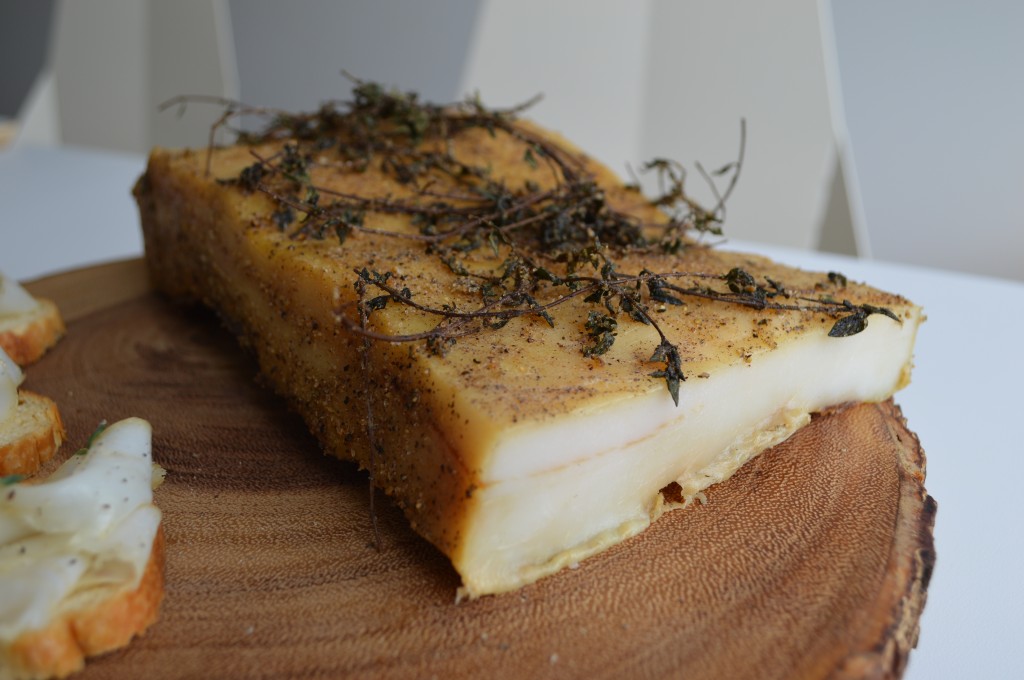Originally posted on July 5, 2014.
 This post is about cured fatback, most commonly known by its Italian name lardo.
This post is about cured fatback, most commonly known by its Italian name lardo.
Fatback is the subcutaneous fat that covers the pork loin. Resist the urge to say “back fat”: it’s called fatback. Industrially-raised pigs are intentionally grown very lean, so the fatback is typically only an inch thick. Heritage pigs can have three inches or more of fatback. These are the animals you need in order to make lardo.
Two autumns ago I got a side of Tamworth pork from Nature’s Green Acres. The fatback was two and a half inches thick in some places. It was the first pig that I ever cut that truly deserved to have its fatback cured and enjoyed on its own, instead of, say, simply being ground into sausage mix or rendered into lard.
The procedure for curing fatback is simple. Cut the fat from the lean meat. Rub with salt, sugar, herbs, and spices. Rosemary is common. I used thyme, juniper, bay, and black pepper. Store the fat in a cool, dark place for six months or longer. A cool, dark place could be a centuries-old Carrara marble box in a dank Tuscan cellar, or it could be a drawer in the bottom of your fridge. In the latter case, put the salted fat in a Ziploc bag and cover tightly with aluminum foil to keep out light. Light promotes oxidation and develops off-flavours in fat.
Six months later your slab of fat is ready to taste. My first taste of lardo was in a salumeria in San Daniele. Raw pork fat sounds so outrageous to my Anglo-Saxon ears that I expected an audacious flavour and grotesque texture. Truth be told lardo is an extremely subtle preparation. It is mild, sweet, faintly lactic, and above all creamy.
My homemade lardo is similar to the stuff I ate in Italy, though I think I was a bit heavy-handed with the sugar. And the exterior was extremely salty: the first few slices were frankly inedible.
I’ll use this word again: subtle. Lardo is so subtle it promotes contemplation. How could something so crude be so nuanced in flavour and texture?
A civilized preparation, this cured fatback.
